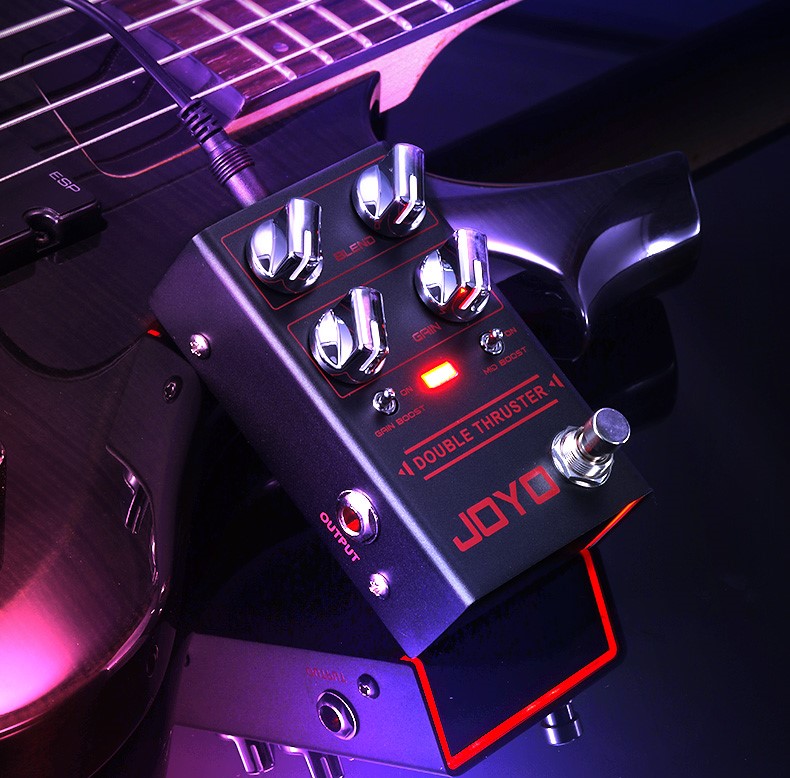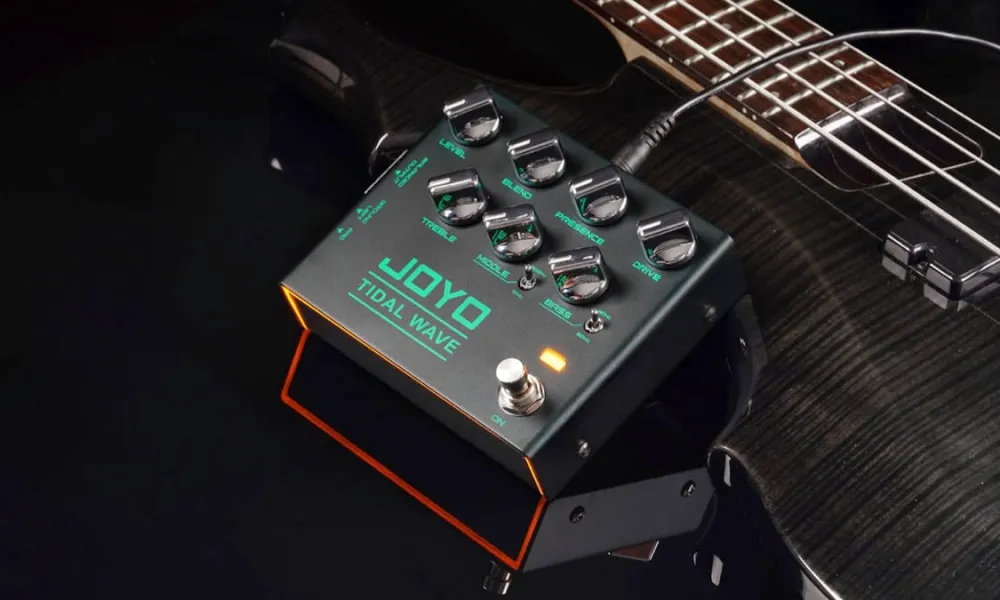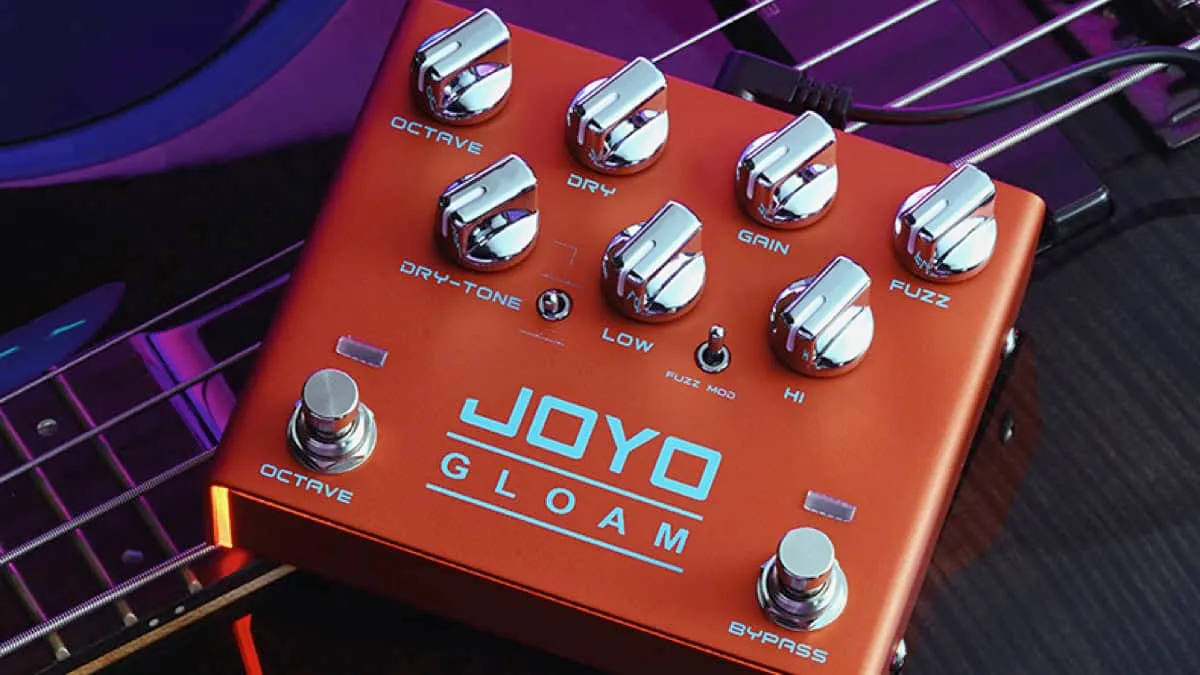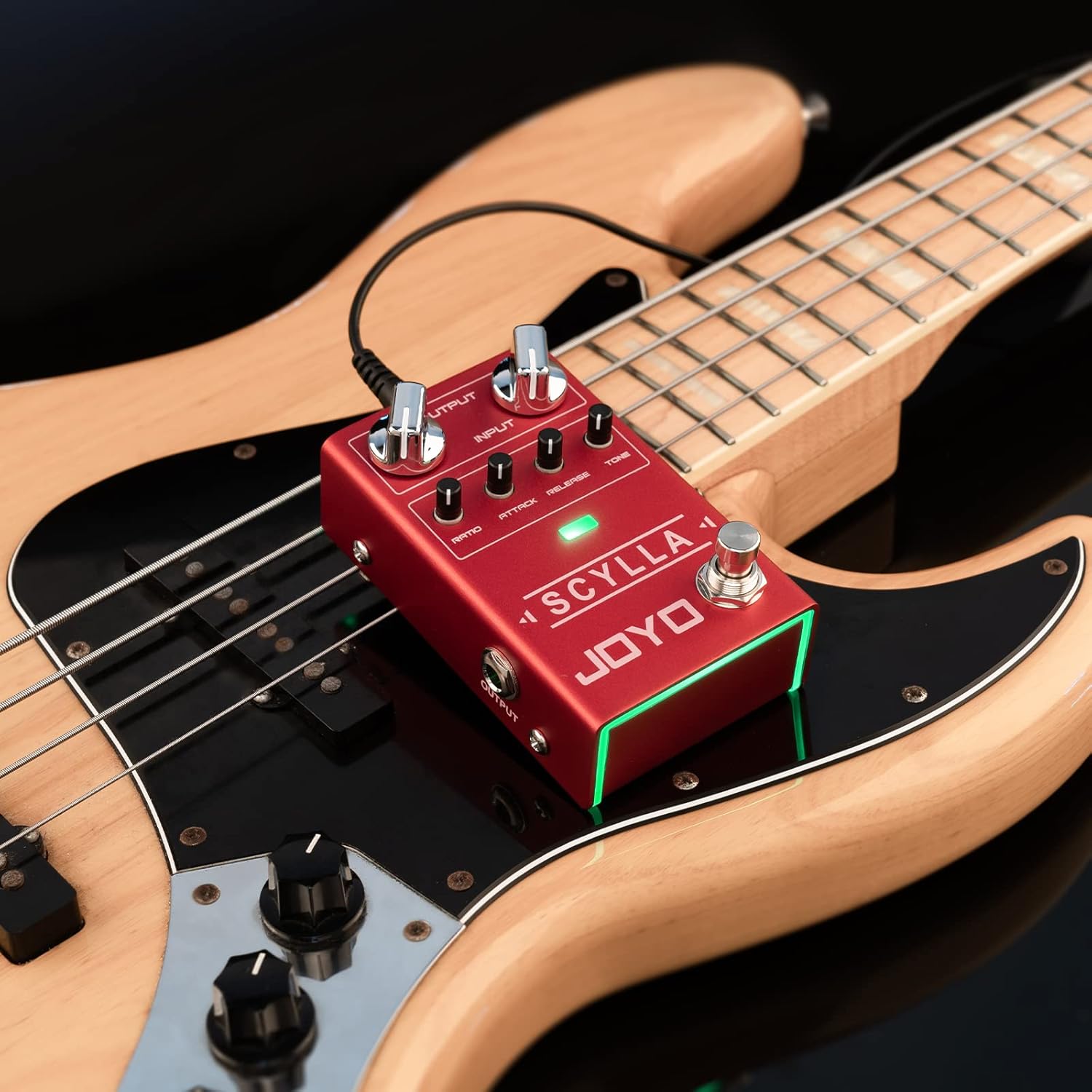
Joyo Double Thruster – High-Gain Bass Overdrive: Pedal Review (2025)
Affordable Versatility: Unlocking Iconic Bass Distortion with the Joyo Double Thruster Distortion is one of the most transformative effects in a bass player’s toolkit. From the gritty growl of Lemmy Kilmister to the fuzzy depths of Chris Wolstenholme’s tones, distortion has been pivotal in creating some of the most iconic bass sounds in music history. Yet, achieving a distortion tone that complements the bass’s foundational role while standing out in the mix is a challenge. Enter the Joyo Double Thruster: an affordable, feature-packed bass distortion pedal designed to meet the needs of modern bassists without compromising the essential low end. Verdict – Joyo Double Thruster Pedal Check the Price on Amazon –> Disclaimer: This pedal was kindly provided by Joyo for the purpose of this review. However, this does not influence our opinion or the content of our review. We strive to provide honest, unbiased, and accurate assessments to ensure that our readers receive truthful and helpful information. The Role of Distortion in Bass History Bass distortion isn’t just about adding grit; it’s about adding energy, texture, and dynamics to a performance. The use of overdriven tones became a defining feature in rock and metal genres, with pioneers like John Entwistle and Geezer Butler shaping their sounds through innovative use of distorted amps and effects. Modern players like Tim Commerford and Justin Chancellor have taken this foundation further, using distortion to carve out sonic space in dense mixes and add expressive character to their playing. With its range of tonal options and budget-friendly design, the Joyo Double Thruster aims to honor this tradition while delivering the versatility demanded by today’s bassists. Features and Specs Compact yet rugged, the Joyo Double Thruster is built to handle both the stage and studio. Its comprehensive controls allow bass players to sculpt their tone with precision. Specifications: Control Layout: Performance The Double Thruster excels in providing a diverse palette of distortion tones. Whether you’re looking for a gentle growl to add harmonic richness or an aggressive fuzz to push the boundaries of heavy music, this pedal delivers. Why Bass Players Need Distortion Distortion isn’t just for the guitarists hogging the spotlight. For bass players, distortion adds dimension to their role as both a rhythmic and melodic foundation. It can: Pros and Cons Pros: Cons: FAQs Q: Is the Double Thruster suitable for slap bass?A: It works best for overdriven tones; slap bass may need tone adjustments to maintain clarity. Q: Does it preserve low-end frequencies?A: Yes, it’s specially designed to keep punchy lows intact while delivering sharp mids and highs. Q: Can it be used with both active and passive basses?A: Absolutely, though slight gain adjustments may be necessary to match pickup output. Final Thoughts The Joyo Double Thruster is more than just a budget-friendly bass distortion pedal; it’s a gateway to exploring the sonic possibilities that distortion offers. With its thoughtful design, excellent low-end retention, and versatility, it’s a tool that honors the legacy of bass distortion while meeting the needs of modern players. If you want to know more about the Joyo Double Thruster, check the official homepage here! Grab the Joyo Double Thruster here → Other Joyo Gear You Might Like If you enjoyed checking out this Joyo pedal, here are more Joyo products worth exploring — all tested and reviewed here on BassGearReviews:



